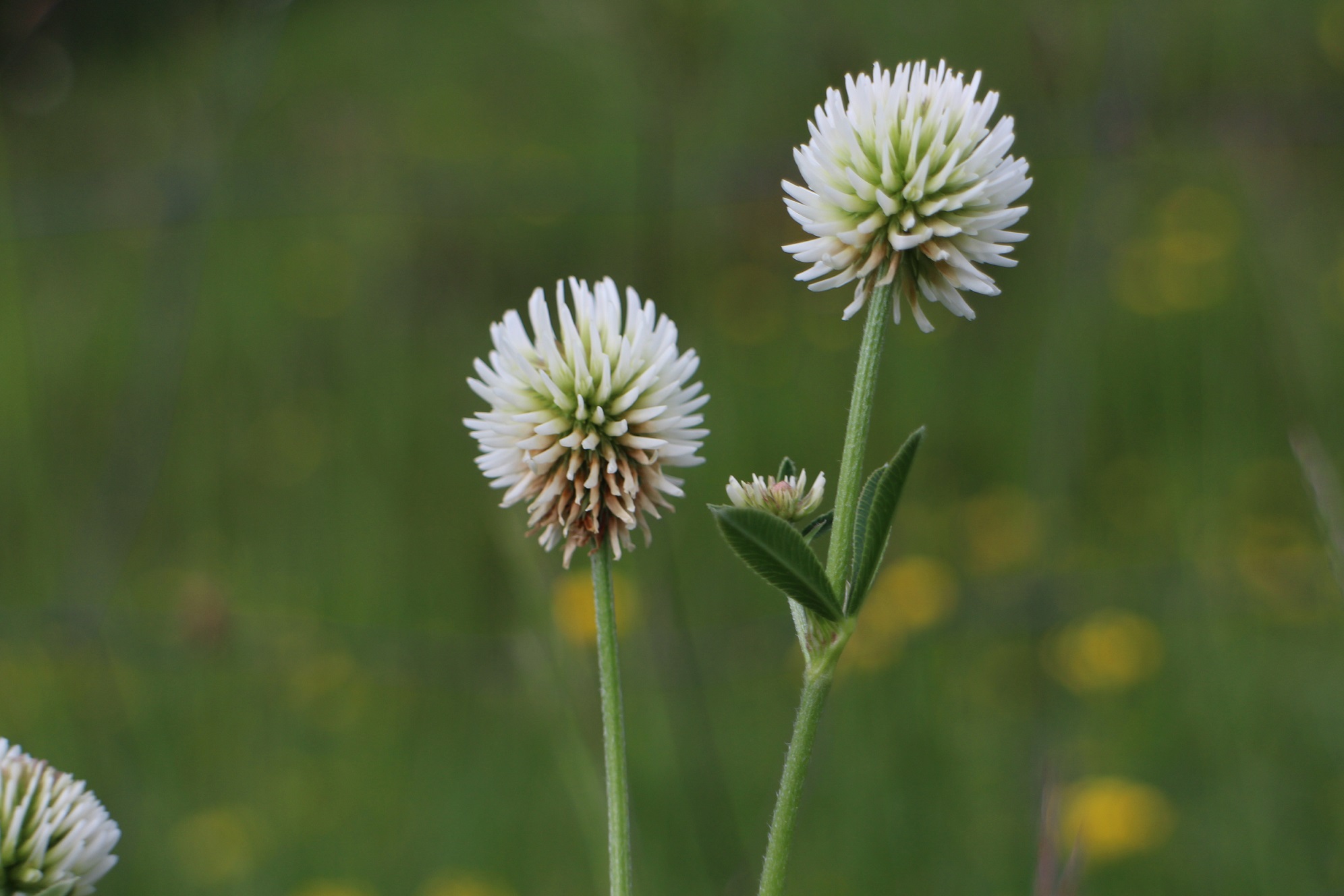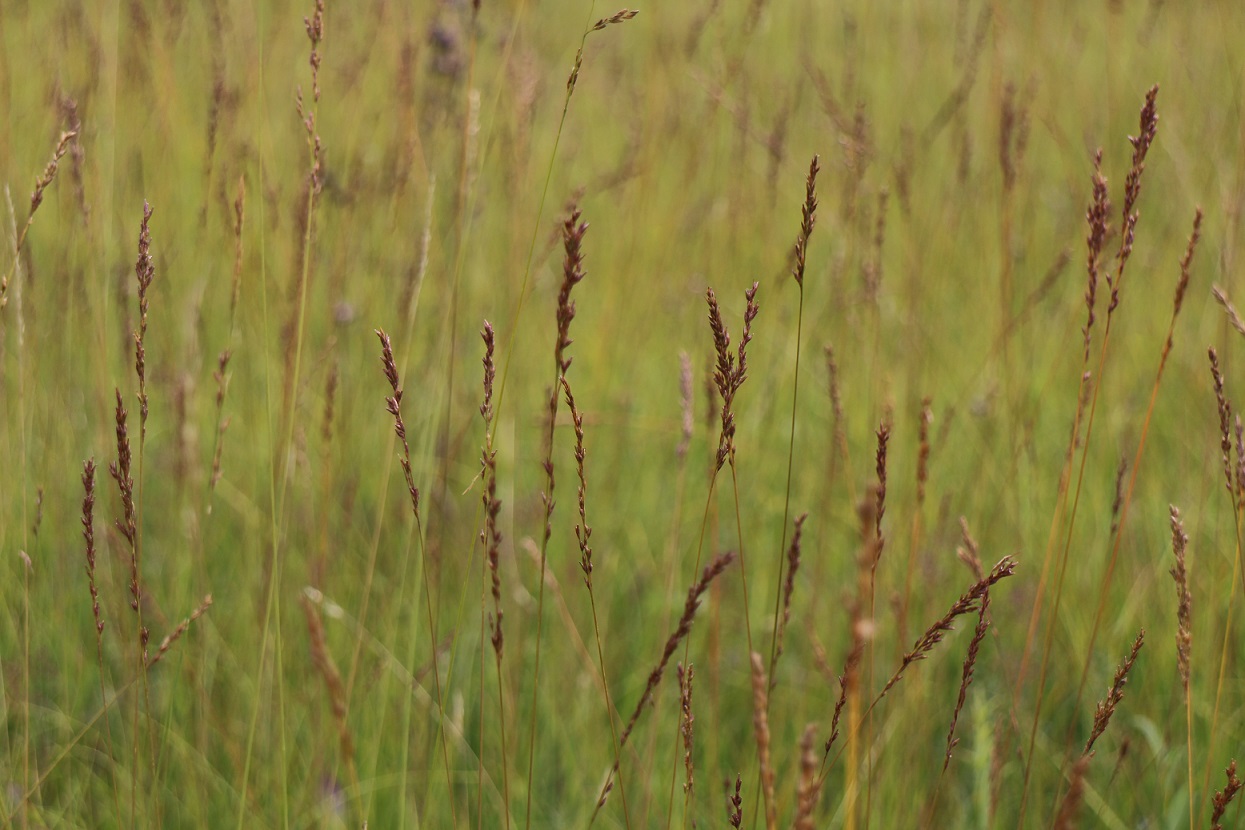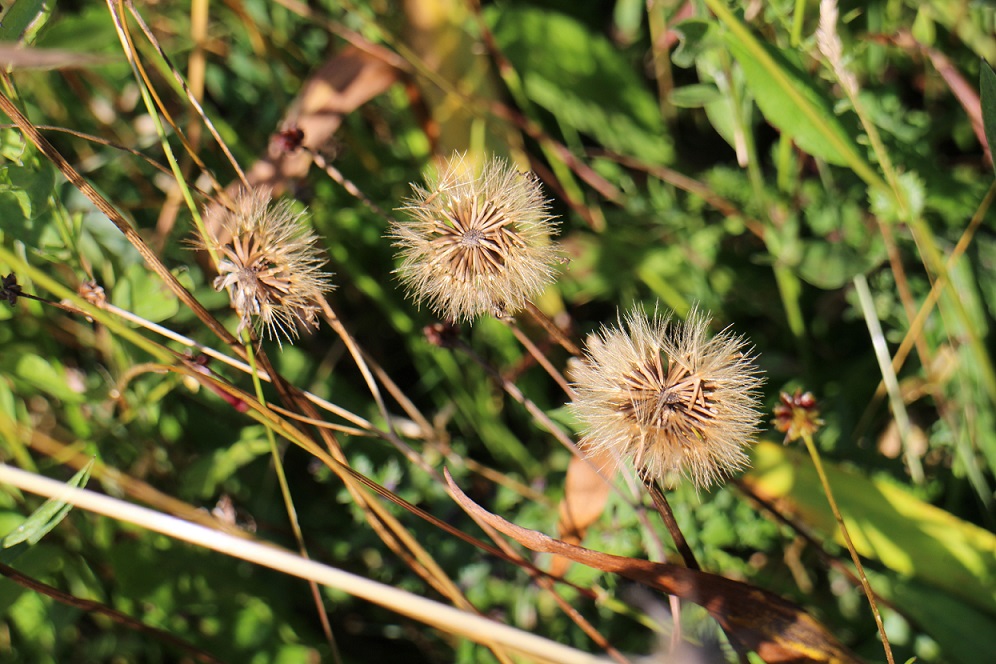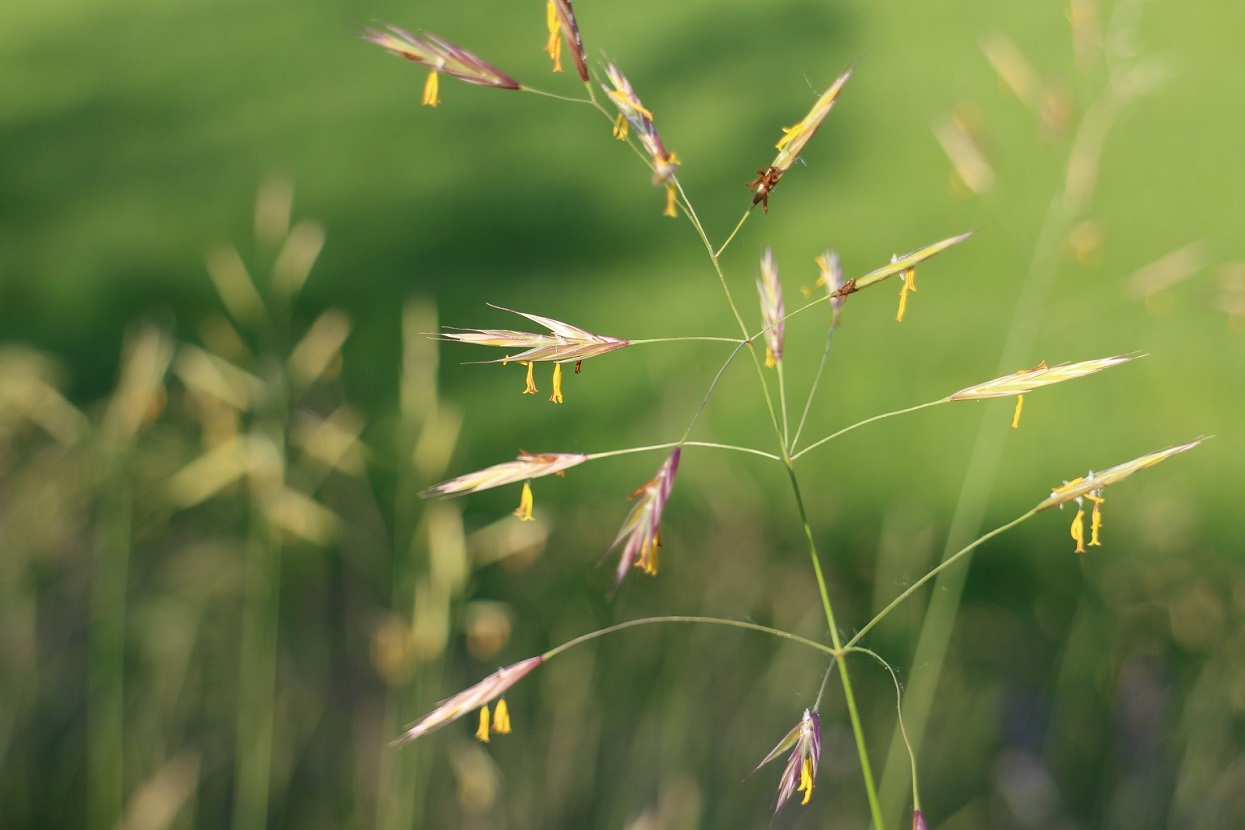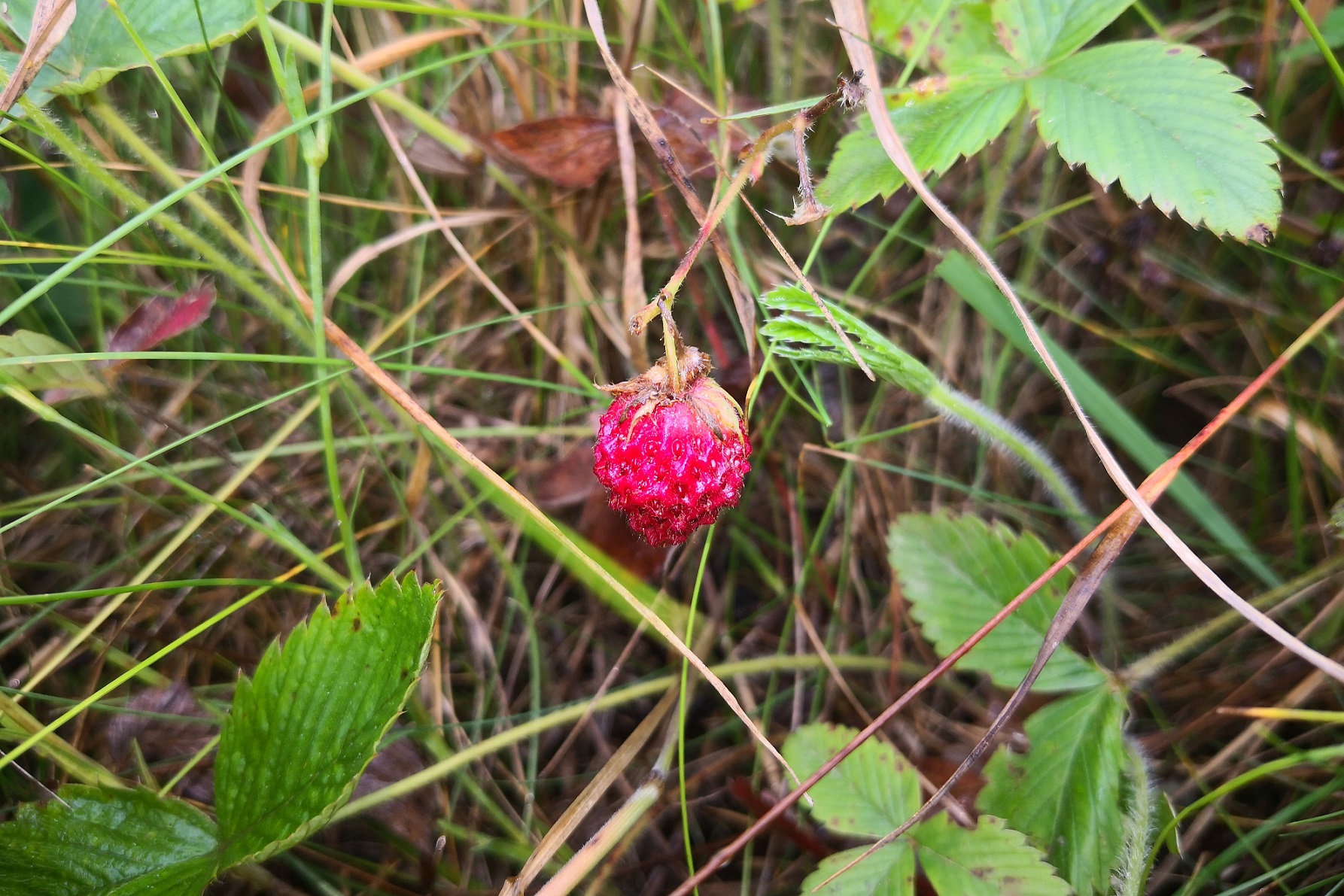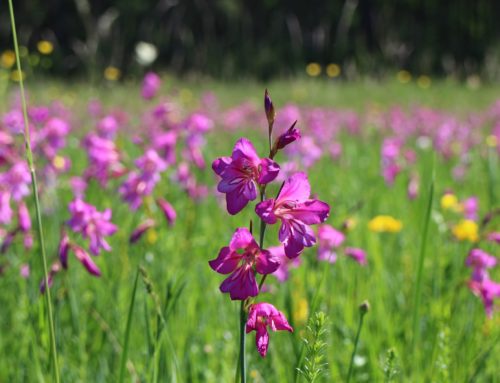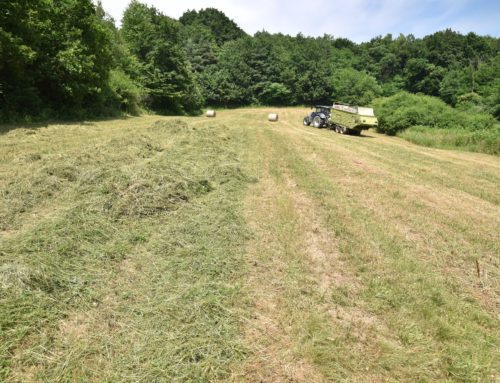In the beginning of November we concluded the first season of seed gathering for the seed bank of LIFE FOR SEEDS project. In approximately five months of fieldwork we collected 3231 seed samples (accessions), that belong to 402 different species characteristic of dry orchid meadows, matgrass meadows and intermittent lakes.
The largest number of samples was collected in July – 37,6 % of the total number.
Among the ten species with the highest number of accessions are five grasses, namely the quaking grass Briza media (n=77), the erect brome Bromopsis erecta (n=77), the cocksfoot grass Dactylis glomerata (n=68), the common velvet grass Holcus lanatus (n=52) and the purple moor grass Molinia caerulea (n=52).
The rest of the »top ten« consists of the blue sedge Carex flacca (n=72), the meadow sage Salvia pratensis (n=62), the mountain clover Trifolium montanum (n=60), the common kidneyvetch Anthyllis vulneraria (n=56) and the rough hawkbit Leontodon hispidus (n=53).
For 108 species only one accession has been collected so far.
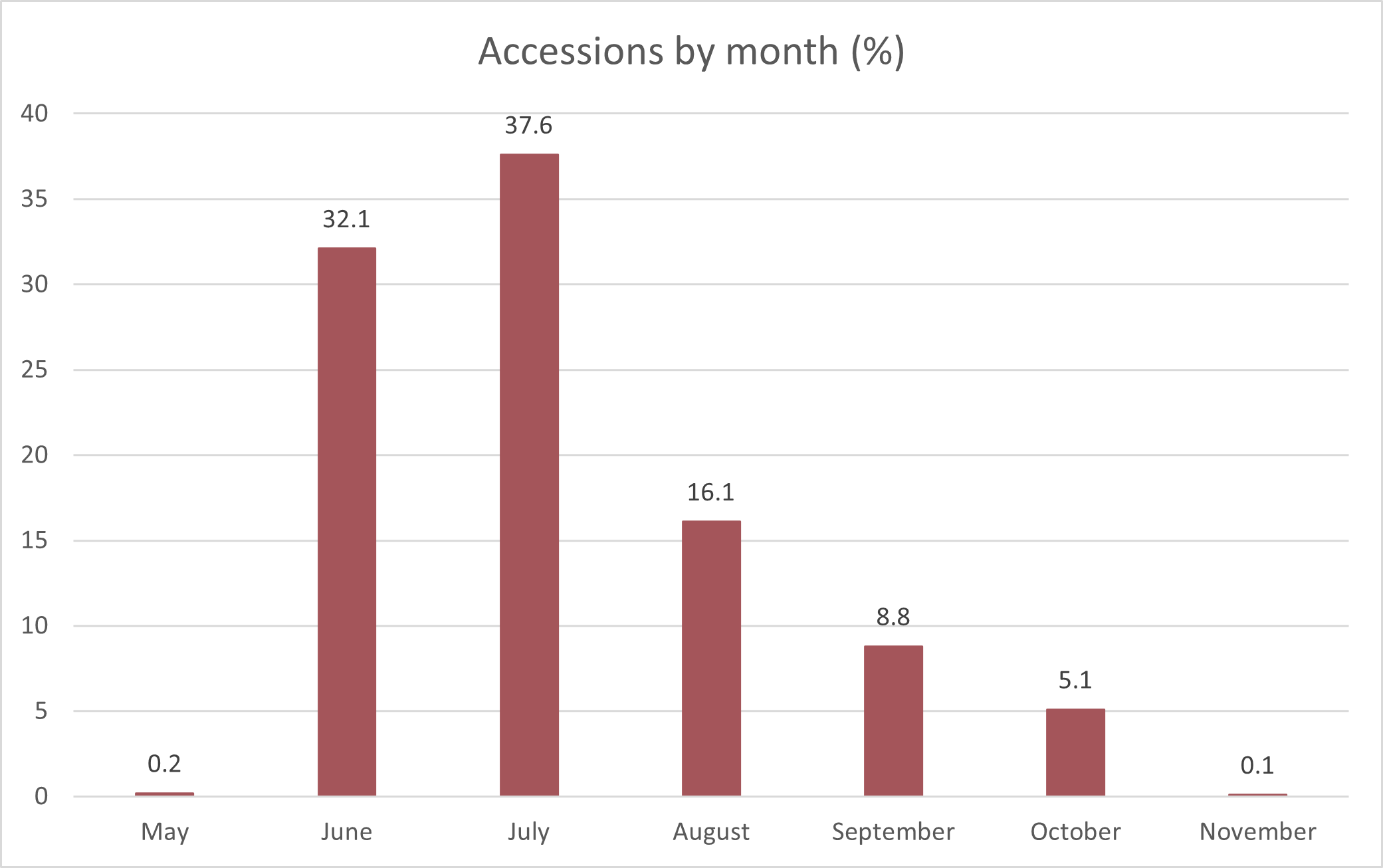
Seeds were gathered on 21 Natura 2000 sites across Slovenia, albeit we have not yet managed to tackle two project sites, Porezen and Karavanke. Almost half of all accessions was collected at five Natura 2000 sites: Goričko, Bloščica, Julijske Alpe, Krimsko hribovje – Menišija and Notranjski trikotnik. Over 1000 accessions were gathered within protected areas that are managed by three of the project beneficiaries. Untill the following season, the accessions need to be dried, cleaned and packed to be stored in both seed banks (Jable and Ormož Basins Nature Reserve).


